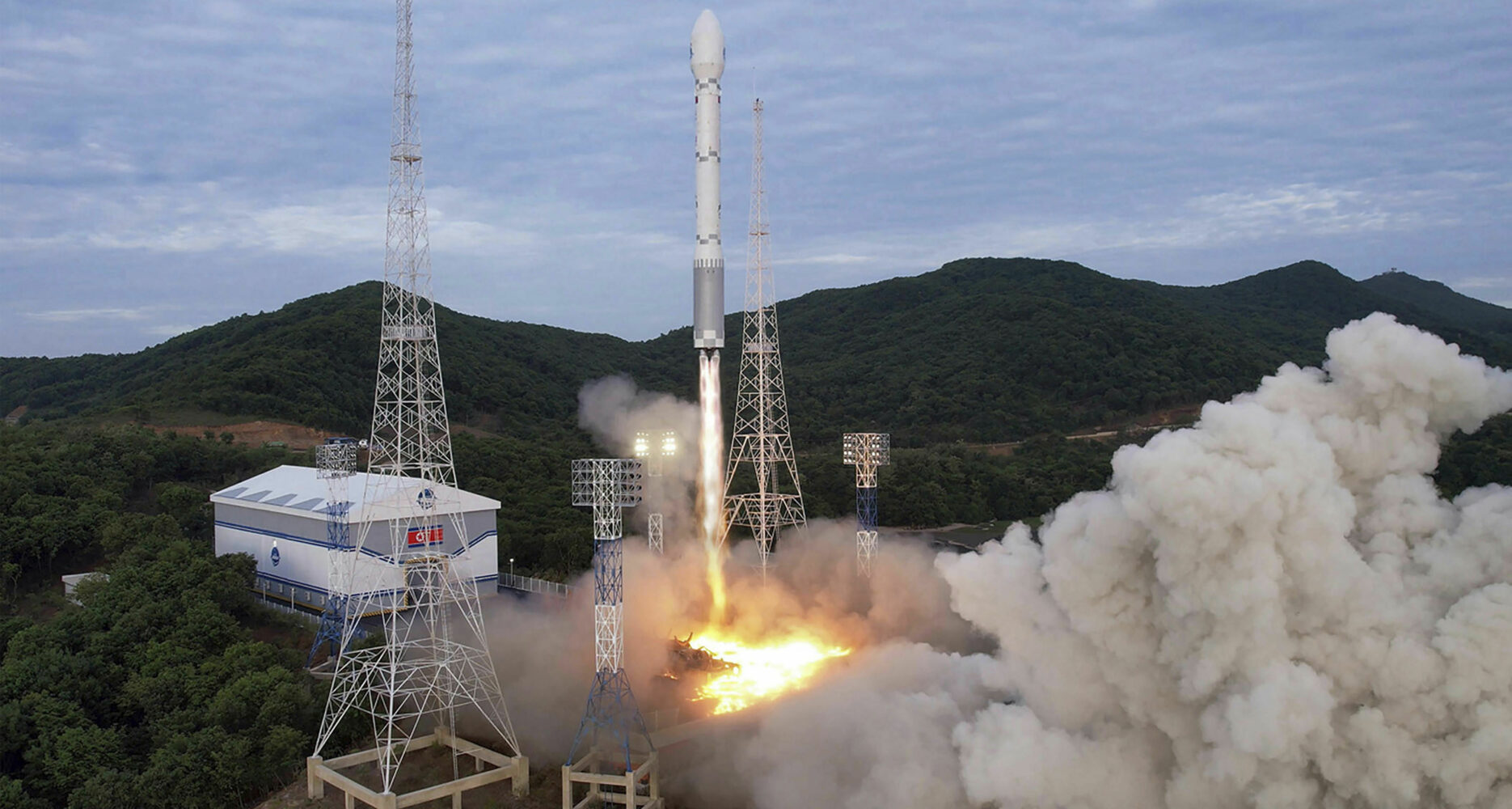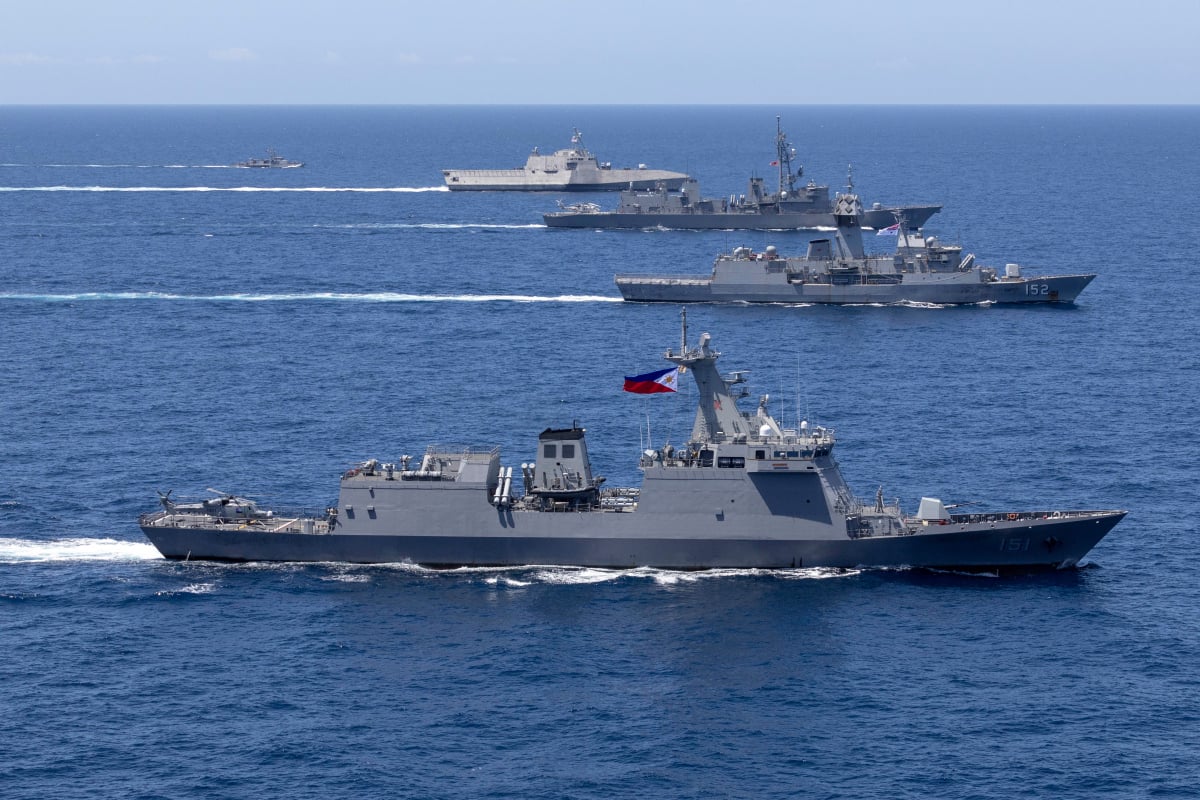
North Korea carried out an unsuccessful attempt to launch a military satellite on Thursday, with the launch vehicle breaking up into three separate parts that landed in the Yellow Sea, East China Sea and the Philippine Sea.
Thursday’s launch was the second attempt to deploy the Malligyong-1 reconnaissance satellite using a Chollima-1 rocket as the launch vehicle following the failure of the first attempt on May 31.
Earlier on Tuesday, the Japanese government said that North Korea had sent a notification on it would conduct a satellite launch between August 24 to 31. Prime Minister Fumio Kishida said at a press conference Japan and other nations had urged North Korea not to conduct the launch. Kishida said the use of ballistic missile technology violates existing United Nations Security Council resolutions on North Korea. Japan’s NHK reported that Kishida also said Japan had already built up its defense readiness to prevent any missile hitting Japan’s territory.
Since April, Japan has deployed ground-based Patriot PAC-3 surface-to-air missile systems in its southwest islands, along with its Ballistic Missile Defense (BMD) capable destroyers around its waters, with orders to destroy any missile should they appear to be on a trajectory to hit Japan’s territory. The Pentagon on Tuesday released a photo of one of the Japan Maritime Self Defense Force’s (JMSDF) eight BMD capable destroyers, JS Maya (DDG-179) sailing together with carrier USS Ronald Reagan (CVN-76) in the Philippine Sea that day.
North Korea had sent the notification to the Japan Coast Guard which is the authority for issuing safety and navigation notifications for Naverea XI. The International Hydrographic Organization divides the world’s oceans into 21 zones in which a single country is responsible to coordinate and issue overall safety and navigation warnings for the zone. The North Korean notification stated the designation of three danger areas where its launch vehicle may fall into the Yellow Sea, in the East China Sea and west of Luzon in the Philippines.
On Thursday, the Japanese Ministry of Defense issued a release on Thursday saying that at 3:51 a.m. local time, North Korea carried out a launch using ballistic missile technology from the Dongchang-ri area in the northwestern coastal region of North Korea. A single missile was launched and separated into three parts, all of which fell outside the notified danger areas and all outside of Japan’s Economic Exclusion Zone, according to the release.
The first piece of debris fell into the Yellow Sea at 3:58 a.m. in an area 186 miles west of the Korean Peninsula, while the second part fell at 3:59 a.m. in the East China Sea, in an area 350km southwest of the Korean Peninsula while the final portion passed through the Miyako Strait between Okinawa and Miyako Island at around 4 a.m. and landed in the Philippine Sea at 4.05 a.m. in an area 372 miles east of the Philippines.
North Korea’s Korea state run Korean Central News Agency stated that the National Aerospace Development Administration (NADA) of the DPRK conducted the second launch of the Malligyong-1 reconnaissance satellite which was carried on a Chollima-1 rocket at the Sohae Satellite Launching Ground in Cholsan County of North Phyongan Province at dawn on Aug. 24 and that the flights of the first and second stages of the rocket were normal, but the launch failed due to an error in the emergency blasting system during the third-stage flight. It added that NADA would soon disclose why such had occurred and also stated that it would conduct the third reconnaissance satellite launch in October after thoroughly probing the cause and taking corrective measures.
The Japan MoD’s release stated that North Korea’s series of actions, including its repeated ballistic missile launches, threaten the peace and security of Japan, the region, and the international community, “In particular, North Korea’s recent launches of missiles over the Japanese archipelago are extremely problematic from the perspective of ensuring the safety of not only aircraft and ships, but also of nearby residents. Such launches would also violate relevant United Nations Security Council resolutions prohibiting any launches using ballistic missile technology by North Korea, even for the purpose of launching satellites. This is a serious safety issue. Japan lodged a strong protest against North Korea and condemned it in the strongest possible terms” read the release.
U.S. Indo-Pacific Command also stated the launch , “The DPRK’s launch using ballistic missile technology, which despite its failure, is a brazen violation of multiple unanimous U.N. Security Council resolutions, raises tensions, and risks destabilizing the security situation in the region and beyond. This launch involved technologies that are directly related to the DPRK intercontinental ballistic missile program” read the statement which also stated INDOPACOM was assessing the situation in close coordination with allies and partners and that while the event did not pose an immediate threat to U.S. personnel, territory, or that of U.S. allies, INDOPACOM will continue to monitor the situation, “ the U.S. commitment to homeland defense and the defense of the Republic of Korea and Japan, remains ironclad” concluded the statement.





